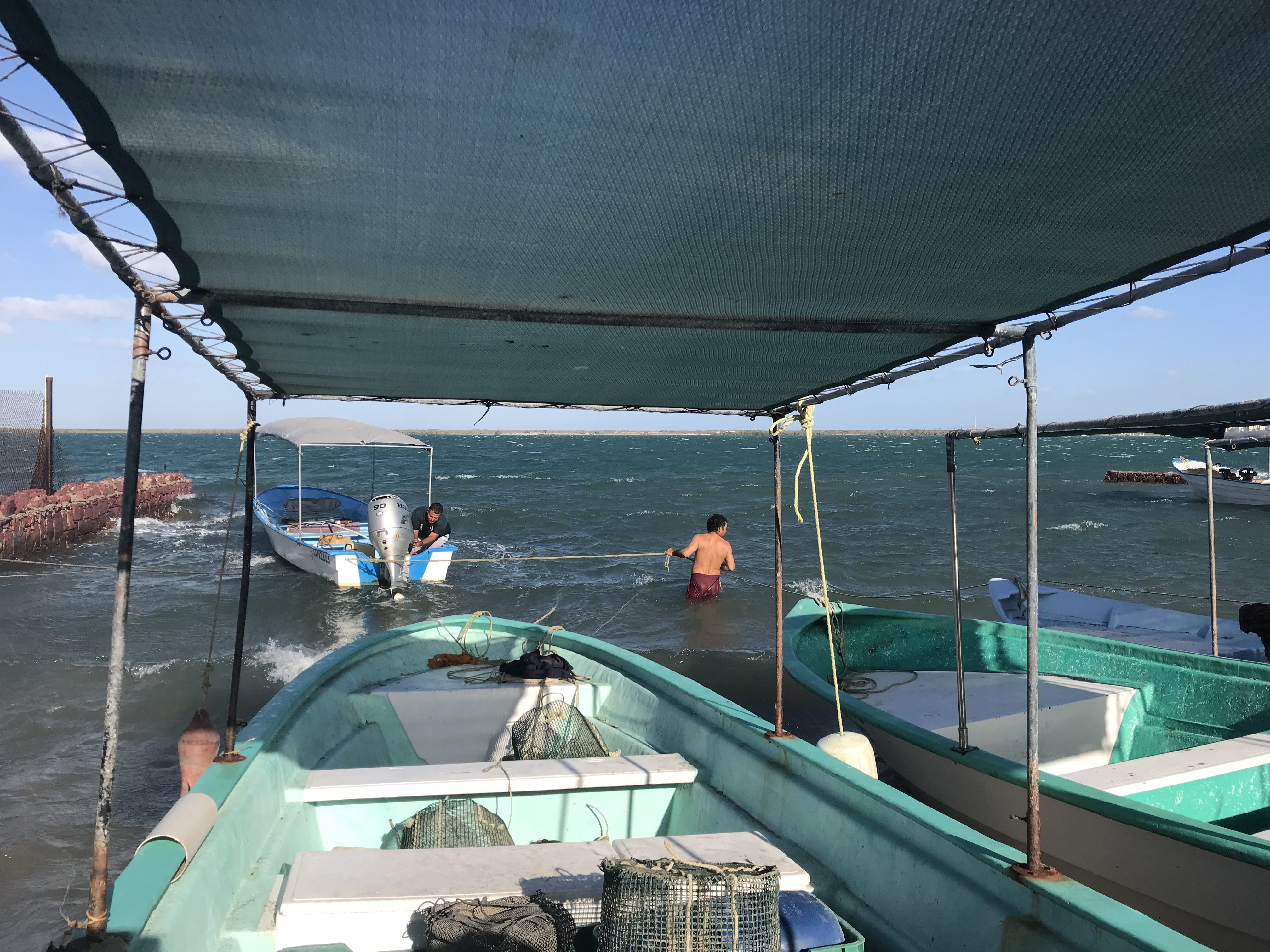
The Community Pushes Back
Success stories in fishery restoration around the world illustrate the importance of translating a shared vision of a healthy fishery into a robust shared accountability for community surveillance programs to safeguard that fishery.1 But developing a reliable surveillance process took El Manglito residents many years of living through crises, any one of which could have derailed the entire process.

Stolen Clams in the Night
The journey to effective communitarian surveillance of the Ensenada de la Paz bay eventually required facing internal challenges that money alone could not solve. In 2014, a significant number of the Callo de Hacha clams disappeared over a two-week period. A few months later, another theft occurred. As the word of the stolen clams spread, so too did anger and cries for reprisals. The manner in which they dealt with these thefts was “a defining moment,” says NOS co-founder Alejandro Robles, especially because the person responsible, Herubey Avilés, was part of the initial surveillance team.
An Invasive Species
As the Ensenada de la Paz was starting to recover, another major setback arose from the discovery in 2014 of an tunicate invasive species, possibly transported by one of the international fishing fleets or large private sailboats.
Incidents like these have taught OPRE and the community that sustaining their restoration efforts is a never-ending challenge. El Manglito is not an island. All around the community are other fisheries, many of which are also depleted and many of whose members also struggle. For example, long-term Manglito resident Ramona Méndez says that, “Right now illegal fishing is going on [in the Ensenada de la Paz bay], but it’s not being performed by any of the [Manglito] community members. It’s being done by others from outside who are not involved with NOS in any way. They’re coming from other neighborhoods. They know what’s going on here and they are robbing it. The news of our success has spread. The fishers here are trying to talk to them about what’s going on here. They do manage to talk to a lot of them, and communicate that we’re restoring this place and that they don’t have permits. ‘Please understand what we are trying to do,’ they say. And a lot of them do nicely understand, but many others get angry. And the robbing continues, so the surveillance work goes on 24/7.”
(1) Ostrom, Elinor (1990). Governing the Commons: The Evolution of Institutions for Collective Action, Cambridge U Press; Marten G., Environmental Tipping Points: A New Paradigm for Restoring Ecological Security1 Journal of
Policy Studies (Japan), No.20 (July 2005), pp. 75-87 (cf., p. 81)
